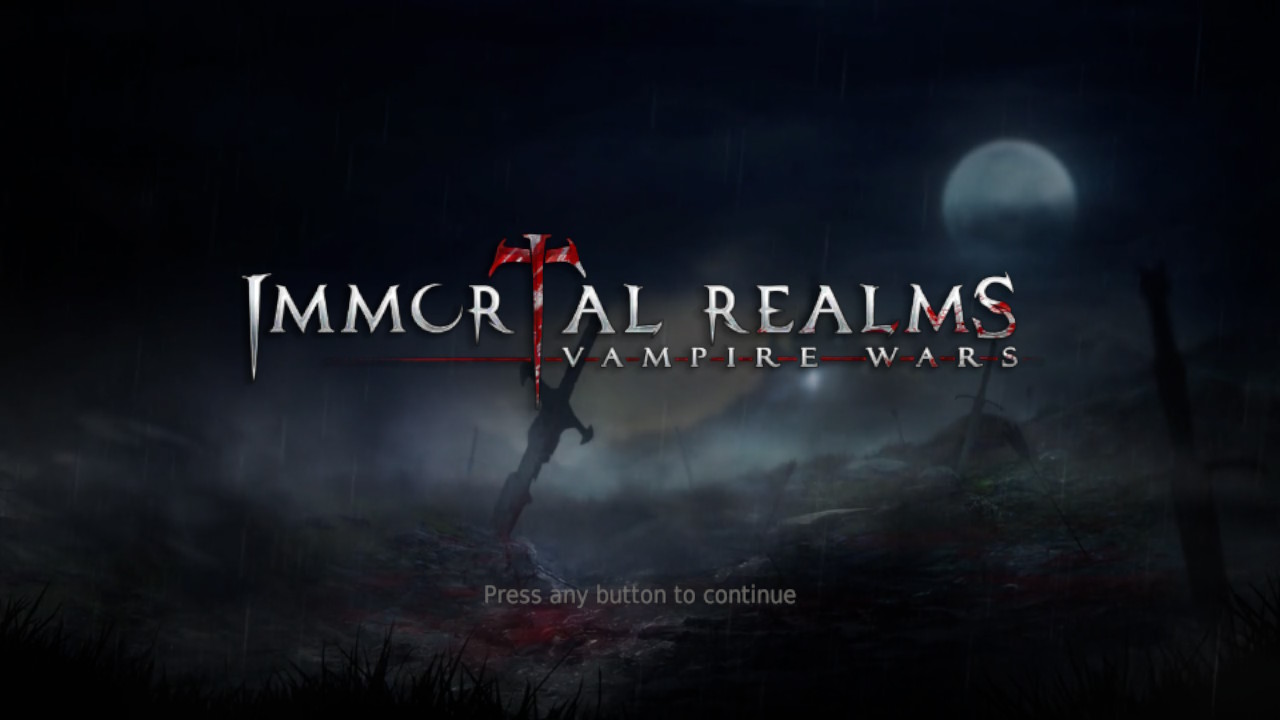Immortal Realms: Vampire Wars
Nintendo Switch
Developed By: Palindrome Interactive
Published By: Kalypso Media Group
Category: Strategy
Release Date: 08.28.20
Composer: Mats Lundgren
At first glance, Immortal Realms: Vampire Wars for the Nintendo Switch gives off some pretty big 4X strategy game vibes. That’s a genre I happen to love on PC, but it’s proven tough to translate that interest to console. 4X games require a lot of navigating through menus, and a mouse and keyboard are simply more efficient for that. IR:VW isn’t a 4X game, however; its world map is actually more reminiscent of a strategic board game. Combined with a competent turn-based battle system, Immortal Realms: Vampire Wars won’t give players as deep an experience as an Endless Space or a Civilization, but for players looking for a game with minimal but sufficient empire-building elements and satisfying tactical combat, it’ll do just fine.

Story, Skirmish, Sandbox
Immortal Realms: Vampire Wars features three game modes. The first, campaign, sees players take the role of one of three vampire factions – the Dracul, the Nosfernus, or the Moroia. Each faction has four missions, which may not sound like much, but each scenario has multiple objectives and can take a while to complete. The stories themselves are fine, I suppose; I won’t go into spoilers, but the characters aren’t especially deep and I didn’t find any of their personalities strong enough to keep me particularly invested in their stories. While I did like the setting and I was initially interested in the game world, the campaign mostly felt like I was checking off objectives rather than progressing through a story.
Skirmish mode allows players to build custom armies and heroes and play out battles without any of the empire-building or world map stuff around it. I suppose it’s nice for people who just want to practice or experience the battle system, but I really didn’t get much use out of it. Finally, there is sandbox mode, which is an open-play session. The game generates a map, players set their preferred victory condition and number of opponents, and all the kingdoms on the map work towards it. This mode also has quest cards that are drawn as soon as a quest is completed or failed, which gives players additional objectives to work towards if they need them. I suppose it may also generate some new advantages in certain cases, but I never found the quest rewards to be all that amazing – certainly nothing that would grant a large advantage in battle or on the world map.
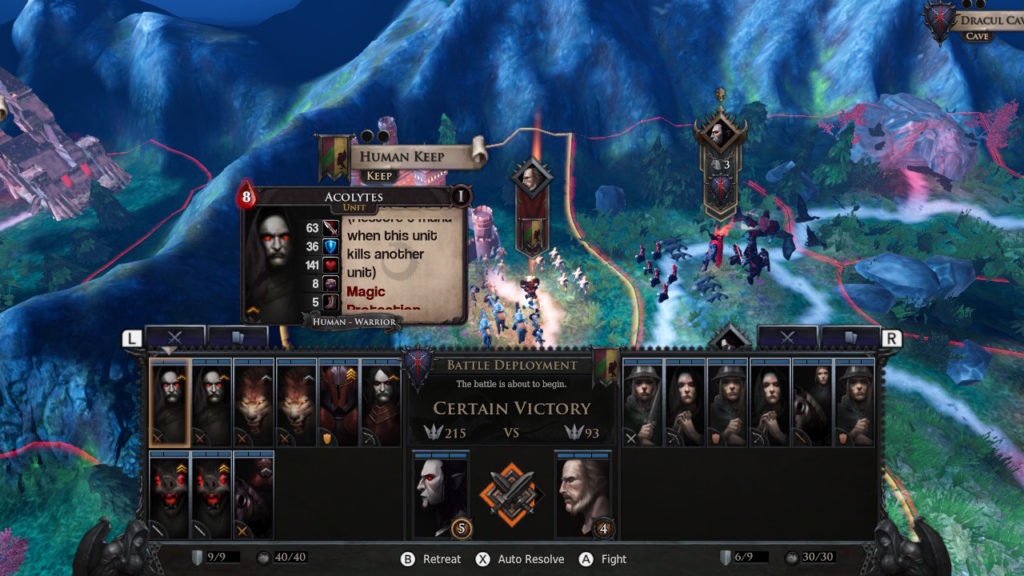
Mapping A World Of Vampires
The game’s world map is split into tons and tons of smaller areas; each player has hero units that can lead their armies across the board. Armies can keep moving and taking actions as long as they have action points. Armies don’t have to be led by a hero, but it’s recommended as they add an action point to their force and only heroes can claim territory. Claiming territory grants experience to both the hero doing the claiming and a player’s bloodline, which we’ll get into in a minute. Some tiles have special buildings on them. Towns and cities are used to generate blood, the game’s currency, which can be spent to recruit units, purchase building upgrades, or buy or play cards. Some tiles have places like forests, graveyards, or caves where units can be recruited. Finally, specialty structures like blacksmiths, libraries, or wishing stones can be used to buy cards or receive special buffs. Keeps are the most important tiles in the game; capturing a keep allows players to recruit a new hero.
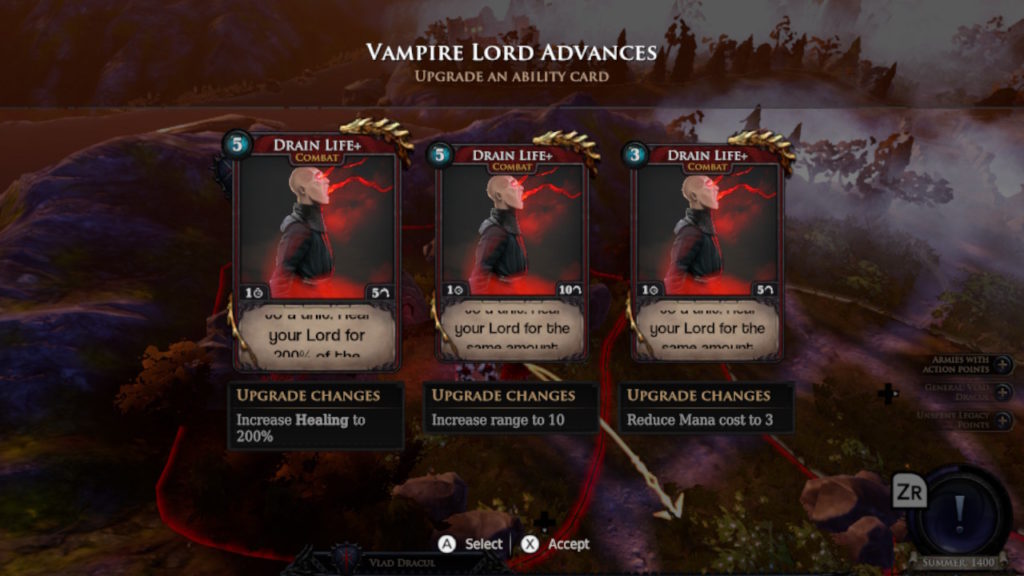
Playing With A Full Deck
I mentioned cards earlier, and that’s one of the aspects of the game that most resembles a board game. At the beginning of the game, and then again at the beginning of every year (a year lasts four turns), players draw three cards to add to their hand. Every card has a blood cost which much be paid before it can be used. Cards do a lot of useful things like healing units, giving your armies bonus AP, or reducing the costs of recruiting units, building structures, or even buying new cards! Manipulating cards is one of the game’s more strategic elements; while no world map cards really allow players to take direct action against an enemy, they do allow players to empower their own armies and sometimes gain a small advantage – or just keep them alive long enough to stay in the fight.
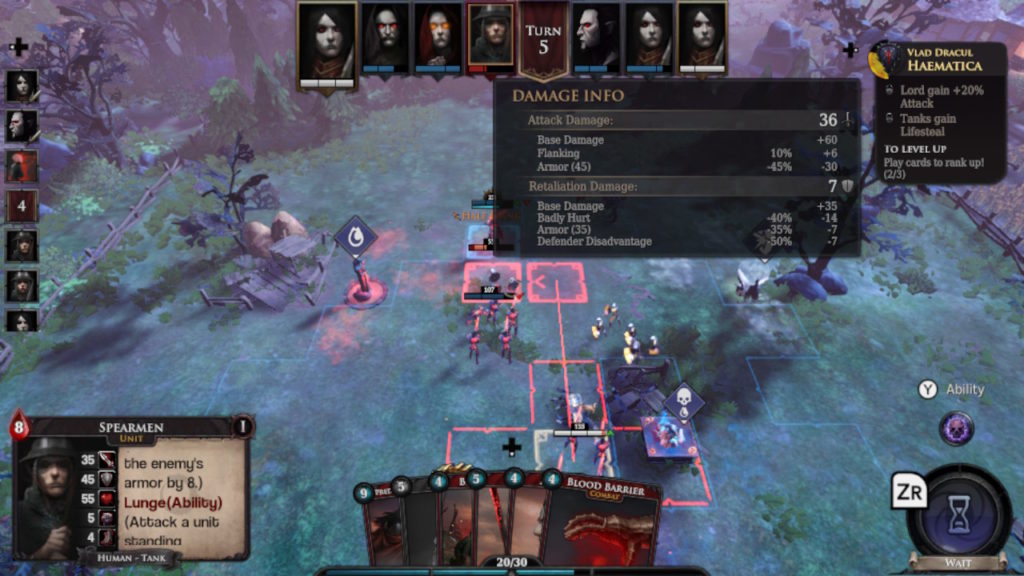
Leading From The Front
Regular units have standard stats and some have special abilities that can be unleashed during combat, such as healing spells or area attacks. Units are divided into melee and ranged attack types, and are divided into roles like defenders, attackers, and support. Surviving battles improves their veterancy level, which provides individual units with small stat boosts. There are three different tiers of units that can be unlocked as players progress through their bloodline levels. Higher tier units can only be built after upgrading the structures on recruitment tiles, but the extra expense is usually worth it.
While higher tier units can be pretty tough, the real strength of an army comes from its hero. Heroes level up individually, and their stat gains are much higher than those experienced when a regular unit gains veterancy. A hero has their own selection of cards that can be played during battle, which consume the hero’s mana instead of its kingdom’s blood pool. These cards can heal or buff allied units or damage or debuff enemy enemies. A card can be played during any allied unit’s turn. I personally preferred recruiting heroes with big offensive spells and throwing as many of them out at the beginning of the battle as I could. It worked well, as long as the opponent didn’t have a lot of healing spells handy.
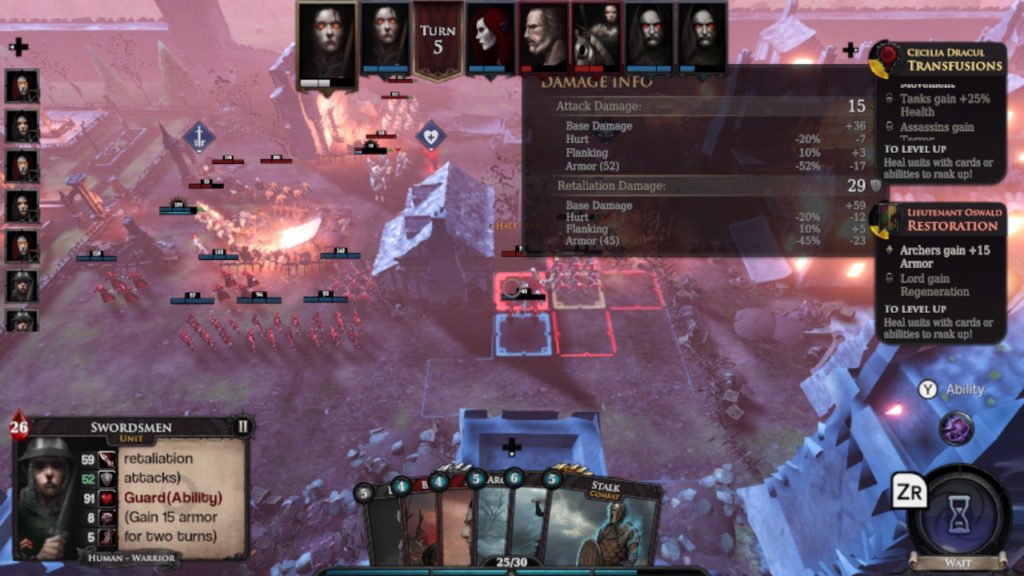
Get To The Fighting, Already!
When a player unit and an enemy unit occupy the same area on the world map, combat starts. Well, there’s an autocombat option for some battles, but I don’t recommend using it. The computer always takes a lot of unnecessary damage that takes longer and/or costs more to heal. Anyway, players have the opportunity to arrange their units as they wish in their starting area, and once the fighting starts players engage in turn-based combat on a square grid battlefield. It’s a pretty standard setup; melee units need to be adjacent to an enemy to attack, ranged units can attack anyone with a certain number of squares. Units can be flanked if in contact with more than one enemy, which makes them more susceptible to damage.
Battlefields also randomly feature shrines, which grant special bonuses to any units occupying an adjacent tile. Some shrines grant a unit health regeneration, some grant heroes mana regeneration, and some grant special bonuses to a unit’s attacks, like adding a poison effect or increasing damage. Some shrines even let units use a special ability they don’t normally have. While shrines do add a little variety to the proceedings, combat is fairly vanilla. It’s not that it’s bad or that it’s not fun; it merely competently executes the conventions of the genre without adding anything especially new or exciting to the formula. If that formula appeals to you, as it does to me, it won’t lead to many complaints.

Maintaining The Bloodline
The game’s empire-building and combat are not especially complex, but they do have enough aspects to keep them interesting. The final part of the game I should talk about is the Bloodline Legacy, which I mentioned way back at the beginning and didn’t really get into. A kingdom’s bloodline is basically their upgrade tree. Bloodline levels can be gained by claiming territory, winning battles, playing certain cards, and as a special gift at wishing stones. Gaining a level gives players a point to spend, which can be spent on abilities that unlock new unit tiers, grant permanent bonuses to units, or reduce the costs of building or buying structures, units, and cards, among other things. Like a lot of Immortal Realms: Vampire Wars it’s not especially deep, but it was satisfying any time I unlocked a new ability.
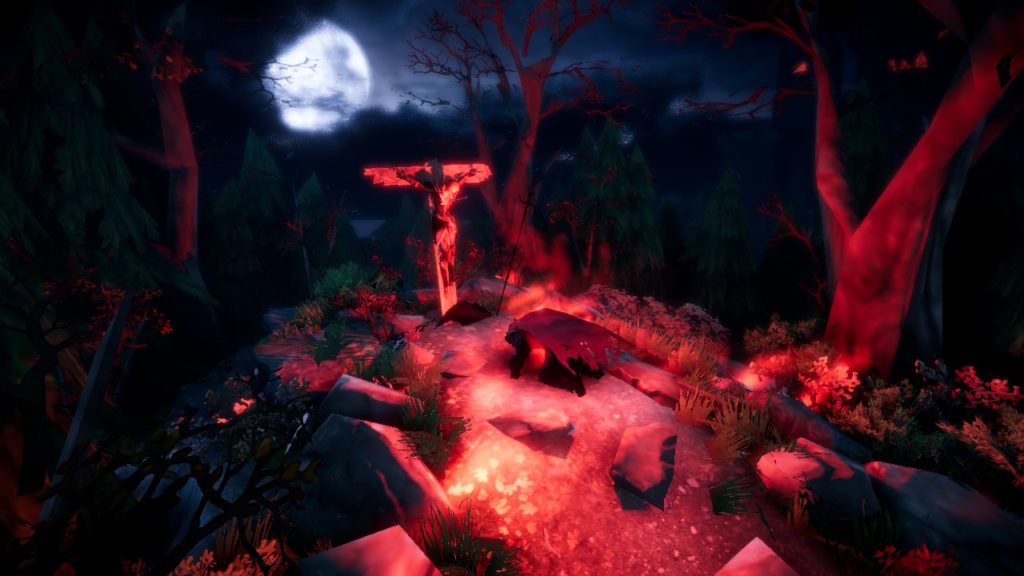
This Art Direction Is Very Mortal
Immortal Realms: Vampire Wars is a decent-looking game. The designs for the various units and heroes are pretty cool, and obviously very heavily inspired by Warcraft. The graphics themselves are fairly middling – they remind me most of Warcraft III – the original, not the remake, which isn’t necessarily a good thing. But while it’s not a game that will win any beauty contests, it’s not an eyesore, either. The soundtrack features some decent background music that sets the mood for the setting well, but falls a little flat with some lackluster voice acting performances. Don’t get me wrong, the voices do add a little bit of life to a somewhat generic story, but much of the delivery is wooden or flat enough that the effect is minimized.
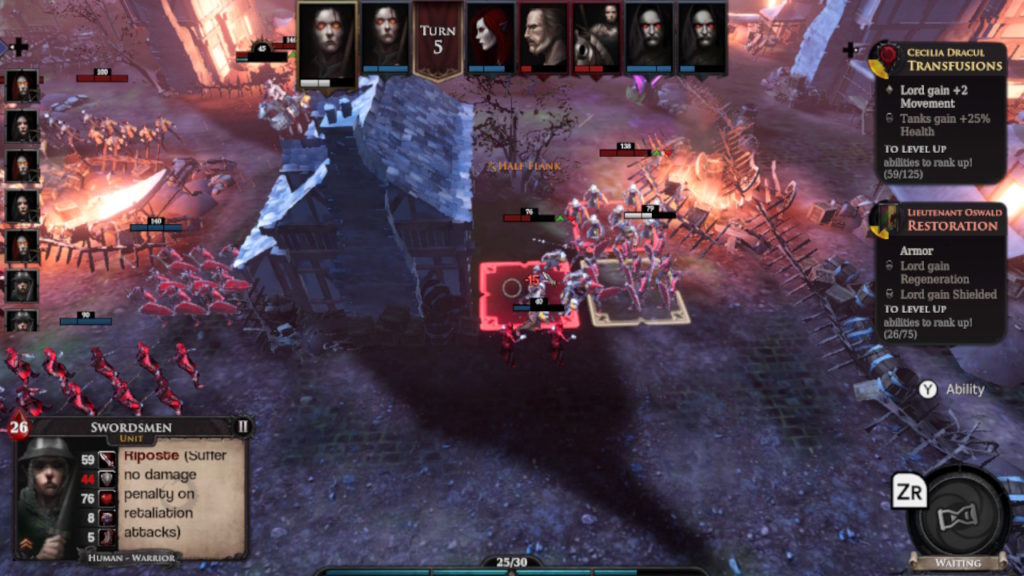
The Immortal Realms Are A Nice Place To Visit, But I Wouldn’t Want To Live There
Immortal Realms: Vampire Wars is a game that will most appeal to casual fans of strategy games. Claiming territory, improving structures, and building armies is just deep enough to keep players’ interest without overwhelming them with minutiae. Ditto for the battle system. For players looking to engage with every small detail of a kingdom, who want an endless parade of graphs and spreadsheets and whatever, this game won’t be meaty enough. Still, for all its small faults, it’s a worthwhile, fun experience for anyone expecting who picks it up expecting one.





Buy Immortal Realms: Vampire Wars
Digital – $39.99
Follow Palindrome Interactive

Follow Kalypso Media Group


The Switch Effect was graciously supplied a code for review purposes.
[Review] Hello Kitty and Friends Happiness Parade – Nintendo Switch

Developed By: Dabadu Published By: Rogue Games Categories: Rhythm Release…

